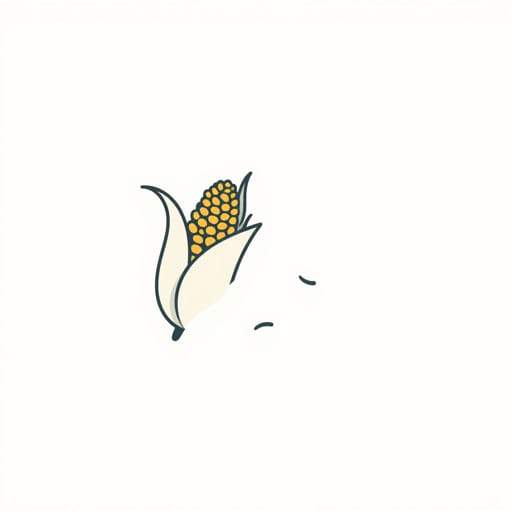What Is Cornstarch In Spanish
Cornstarch is a common kitchen ingredient used in many households around the world. Whether you are baking, cooking soups, or thickening sauces, cornstarch plays a vital role in achieving the right texture. If you are learning Spanish or trying to read a Spanish recipe, you might wonder how to say cornstarch in Spanish and how it’s used in Spanish-speaking countries. This topic explores the meaning, translation, and culinary context of cornstarch in Spanish, along with its cultural significance and applications.
What is Cornstarch?
Cornstarch is a fine white powder made from the endosperm of corn kernels. It is primarily used as a thickening agent in cooking and baking. Cornstarch is flavorless and dissolves easily in water, making it a perfect ingredient to give soups, stews, puddings, and sauces a smooth, thick consistency without changing the flavor of the dish.
Translation of Cornstarch in Spanish
The Spanish word for cornstarch isfécula de maÃz. This is the most formal and accurate term used in many Spanish-speaking countries. However, there are regional variations and more commonly used terms depending on the country or context. Another common translation ismaicena, which comes from a popular brand name but is often used generically to refer to cornstarch.
Common Terms for Cornstarch in Spanish
- Fécula de maÃz Literal and formal translation, meaning starch of corn.
- Maicena Brand-based term widely used informally and understood in most Spanish-speaking regions.
So, if you are in Spain or Latin America and see either fécula de maÃz or maicena in a recipe, it’s referring to cornstarch.
Regional Usage and Variations
In some countries, people may use different words to describe cornstarch, depending on local customs and brand influence. In many parts of Latin America, maicena has become the default term, even in supermarkets and cookbooks. In Spain, both terms are recognized, but fécula de maÃz might appear more often in formal writing or packaging.
Examples by Country
- Mexico: Maicena is commonly used. Most households refer to cornstarch with this term.
- Spain: Fécula de maÃz is more commonly found on product labels, although maicena is still understood.
- Argentina and Chile: Maicena is the everyday term, especially in cooking instructions.
How Cornstarch is Used in Spanish-Speaking Cultures
In Spanish cuisine, as well as in Latin American cooking, cornstarch is used for both savory and sweet recipes. It’s a staple in many kitchens for preparing traditional dishes. Its use mirrors that of other cultures but also includes some region-specific recipes.
Popular Culinary Uses
- Thickening Agent: Cornstarch is used to thicken gravies, soups, and sauces, such as in salsa blanca (white sauce).
- Desserts: Many Latin desserts like natilla (a custard-like dessert), atole (a warm drink thickened with cornstarch), and mazamorra rely on cornstarch for texture.
- Baking: Cornstarch is sometimes added to cake flour or used in cookie recipes for a softer crumb.
Maicena as a Brand and a Generic Term
The term maicena comes from a brand name that became synonymous with the product, similar to how some people say Kleenex instead of tissue. The Maizena brand (spelled with a z for branding purposes) is widely sold in Spanish-speaking markets. Over time, the name became genericized, and people began using maicena to refer to any type of cornstarch.
It’s important to understand this when translating recipes or shopping in Spanish-speaking countries. Even if the packaging doesn’t say cornstarch in English, maicena or fécula de maÃz will usually be the product you’re looking for.
How to Use Cornstarch in Recipes
Understanding how to use cornstarch, or fécula de maÃz, is crucial if you are cooking with Spanish-language instructions. The process is typically the same worldwide:
Steps to Use Cornstarch
- Mix with Cold Liquid: Always dissolve cornstarch in a small amount of cold water or milk before adding it to a hot mixture to avoid clumping.
- Cook Until Thickened: Heat the mixture until it thickens, usually within a few minutes.
- Don’t Overcook: Prolonged boiling can break down the starch and make the mixture thin again.
When following Spanish recipes, phrases like disolver la fécula de maÃz en agua frÃa (dissolve the cornstarch in cold water) are common instructions.
Health and Nutritional Aspects
Cornstarch is mostly composed of carbohydrates and contains very little protein, fat, or fiber. It is gluten-free, making it a suitable thickener for people with gluten intolerance or celiac disease. However, it is not nutrient-dense and should be used in moderation, especially for those managing blood sugar levels.
In many Spanish-speaking countries, health-conscious cooks are aware of these nutritional facts and may choose alternatives like arrowroot or potato starch. However, cornstarch remains popular because of its availability and effectiveness.
Other Spanish Terms Related to Cornstarch
If you are trying to expand your Spanish vocabulary around kitchen and baking terms, here are some related words that might appear alongside fécula de maÃz in recipes:
- Harina de maÃz Corn flour (not the same as cornstarch)
- Espesante Thickening agent
- Postre Dessert
- Receta Recipe
- Mezclar To mix
- Hervir To boil
To sum up, the word for cornstarch in Spanish is most commonly fécula de maÃz, but you will also often hear and see maicena, especially in Latin American regions. Both terms are widely accepted and used in daily life, cooking instructions, and grocery products. Cornstarch holds a special place in Spanish-speaking kitchens due to its versatility in both savory and sweet dishes. If you are learning Spanish or following a Spanish-language recipe, knowing this vocabulary will help you cook with more confidence and understanding.
